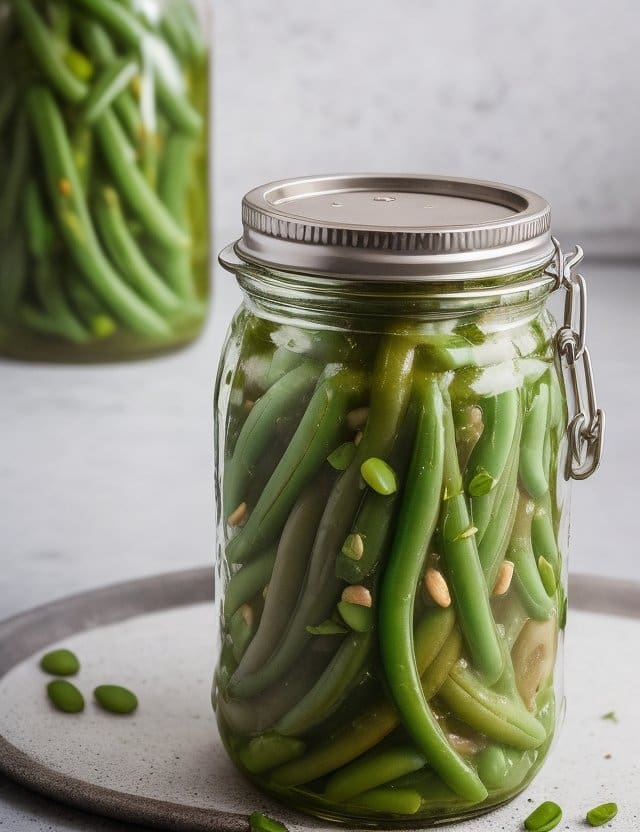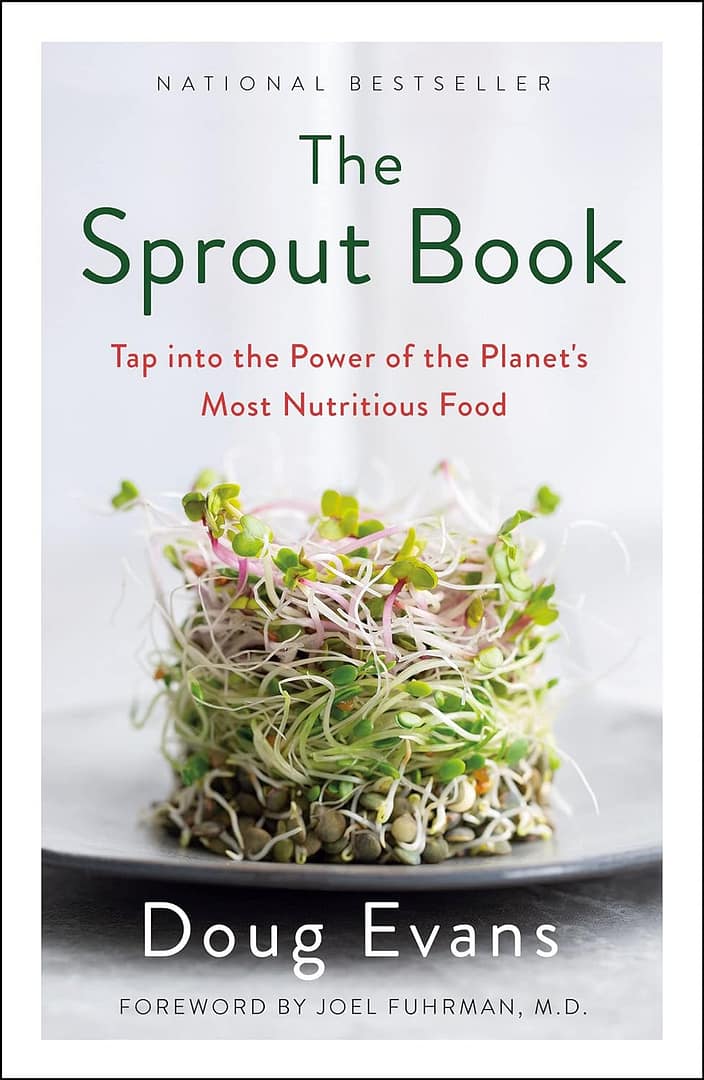In the realm of culinary exploration, few experiences rival the satisfaction of crafting your own cultured root vegetables. Among the crown jewels of this ancient preservation practice are fermented vegetables—turnips, radishes, daikon, and beets. With their crisp textures, tangy flavors, and impressive health benefits, these fermented wonders offer a gateway to culinary excellence and gut-friendly nutrition. Join us as we dive into the captivating world of cultured root vegetables, unraveling their secrets and uncovering the transformative power of fermentation.
Picture a medley of earthy turnips, vibrant beets, fiery radishes, and elongated daikon, all harmonizing in a symphony of flavors and textures. The journey begins with the meticulous selection of these root vegetables. Their inherent attributes lay the foundation for a delightful fermented outcome—a delightful crunch that persists even after weeks of fermentation, delivering an experience that tantalizes both the taste buds and the senses.
Beets: A Radiant Elixir of Wellness
Behold the transformative prowess of beets, the vibrant magicians of the root vegetable kingdom. These ruby-hued gems are endowed with betalains, potent antioxidants that fuel the body’s detoxification processes. Beyond their ability to turn everything they touch into a vivid shade of red, beets gift us with an arsenal of health benefits. They combat inflammation, bolster liver function, and even hold the potential to reduce the risk of cancer. As you slice through these crimson wonders, be prepared for their bold transformation and their journey from earthy delights to vibrant fermentation agents.
Crafting the Fermentation Elixir
As culinary artisans, we embark on a journey of transformation, elevating these humble root vegetables into probiotic-rich wonders. Our fermentation recipe transforms these raw ingredients into savory, tangy delights that delight the palate and nourish the body.
⭐ Get ready for a delightful read! SmoothiePerks presents an engaging blog post about Fermented Garlic – don’t miss out on the goodness!
The Art of Fermentation: A Step-by-Step Guide
Step 1: Selecting the Pristine Roots for your fermented vegetables
Choose a variety of turnips, radishes, daikon, and beets. Wash and chop them into wedges or bite-sized pieces. Embrace the diversity of shapes and sizes, as they add to the visual appeal of the final masterpiece.
Step 2: Packing the Flavors
Gently pack the chopped vegetables into a quart jar, allowing the colors and textures to intermingle, setting the stage for the upcoming fermentation journey.
Step 3: Crafting the Brine
In a bowl or jar, combine 4 cups of water with 2 tablespoons of sea salt. Stir until the salt dissolves, giving birth to the brine that will infuse the vegetables with flavor and probiotic goodness.
Step 4: Submerging the Bounty
Pour the salt water over the vegetables, ensuring they are fully submerged beneath the brine. For the avid fermenter, placing a weight on top maintains the vegetables’ immersion in the brine, sealing their fate as probiotic delicacies.
Step 5: The Magical Transformation
Cover the jar with a clean dishtowel and place it in a room temperature haven. Witness the enchanting alchemy of fermentation as the bubbling symphony orchestrates the transformation. Over 4 to 14 days, the flavors deepen, the tanginess evolves, and the probiotics thrive.
Step 6: A Journey of Tasting and Enjoyment
Once the bubbling subsides, the fermented root vegetables are ready to take their place on your culinary stage. Transfer them to cold storage, allowing their flavors to further mature and meld. They stand as a testament to your culinary prowess and commitment to gut-friendly gastronomy.
Beyond the Plate: Health Benefits Galore
As we indulge in the vibrant tapestry of cultured root vegetables, let us not forget the health benefits that accompany this gastronomic delight. From bolstering digestion to enriching gut health with probiotics, these fermented gems offer a myriad of advantages that resonate throughout our bodies.
⭐ Say goodbye to store-bought supplements and transform your kitchen into a probiotic haven. Discover the art of fermentation and unlock the benefits of gut-friendly foods. Get ready for a slimmer waistline, a stronger immune system, and a happy gut. Check out the video here!
The Artistry of Fermentation Unleashed
Our journey through the world of cultured root vegetables is not merely a culinary escapade—it’s a homage to the age-old art of fermentation. It’s an ode to the natural processes that transform ordinary ingredients into extraordinary culinary marvels. As you savor each crunchy bite, revel in the depths of flavors, and experience the symphony of textures, remember that you are partaking in a tradition that transcends time.
Embrace the Transformative Power of Cultured Root Vegetables
In closing, let the vibrant world of cultured root vegetables be an invitation—an invitation to embrace the transformative power of fermentation. Whether you’re a seasoned fermenter or a curious novice, these probiotic-rich creations beckon you to explore the nuances of flavor, the wonders of gut health, and the magic of culinary transformation. So, gather your turnips, radishes, daikon, and beets, and embark on a journey that promises not only culinary mastery but also a deeper connection with the art of nourishing both body and soul.
Cultured root vegetables offer a range of key benefits
Due to their unique nutritional profile and the fermentation process they undergo cultured root vegetables have some notable advantages:
- Enhanced Nutrient Bioavailability: The fermentation process involved in culturing root vegetables breaks down complex compounds, such as phytates and oxalates, which can inhibit the absorption of certain nutrients. This leads to increased bioavailability of essential nutrients like vitamins, minerals, and antioxidants.
- Probiotic Richness: Fermented root vegetables are a natural source of probiotics, which are beneficial microorganisms that support gut health. These probiotics can contribute to a balanced gut microbiome, aiding digestion, improving immune function, and even potentially impacting mental well-being.
- Improved Digestibility: The fermentation process predigests the carbohydrates present in root vegetables, making them easier for the body to digest. This can be especially beneficial for individuals with sensitive digestive systems or those who struggle with bloating and discomfort when consuming raw or unfermented vegetables.
- Boosted Nutrient Content: Fermentation can increase the overall nutrient content of root vegetables. For instance, certain B vitamins, such as folate, riboflavin, and vitamin B12, may become more abundant during the fermentation process. These vitamins play crucial roles in energy metabolism and overall well-being.
- Diverse Flavor Profile: Cultured root vegetables often develop unique and complex flavors during fermentation, ranging from tangy to mildly sour. This can add variety to your diet and provide an interesting twist to dishes.
- Extended Shelf Life: Fermentation acts as a natural preservation method, extending the shelf life of root vegetables without the need for chemical additives or excessive processing. This can help reduce food waste and allow you to enjoy these vegetables for a longer period.
- Potential Allergen Reduction: Fermentation has been shown to break down proteins responsible for allergies in certain vegetables. This can make cultured root vegetables a safer option for individuals with sensitivities to specific allergens.
- Blood Sugar Regulation: Some research suggests that the fermentation process can lead to a reduction in the glycemic index of certain root vegetables. This means they may have a milder impact on blood sugar levels, which can be particularly beneficial for individuals with diabetes or those looking to manage their blood sugar levels.
- Immune System Support: The probiotics and bioactive compounds produced during fermentation can contribute to a stronger immune system. A healthy gut microbiome is closely linked to immune function, and consuming fermented foods can help maintain this balance.
- Culinary Versatility: Cultured root vegetables can be used in a variety of dishes, from salads to sandwiches to condiments. Their unique flavors and textures can add depth to both traditional and innovative recipes, enhancing your culinary experience.
Remember that individual responses to fermented foods can vary, so it’s advisable to introduce them gradually into your diet, especially if you’re new to consuming fermented foods. Always consult with a healthcare professional, especially if you have specific dietary restrictions or medical conditions.
Cultured root vegetables have also their disadvantages
Cultured root vegetables offer various benefits, but there are also potential disadvantages associated with their consumption. It’s important to consider these factors when incorporating them into your diet:
- Sodium Content: Fermented root vegetables can be high in sodium due to the salt used in the fermentation process. Excessive sodium intake can contribute to high blood pressure and other cardiovascular issues, particularly if consumed in large amounts.
- Histamine Concerns: Fermented foods, including cultured root vegetables, can contain elevated levels of histamines, which can trigger allergic reactions in individuals sensitive to histamine. This is especially relevant for those with histamine intolerance.
- Gas and Bloating: For some individuals, consuming fermented foods can lead to increased gas and bloating. This can be due to the production of gases during the fermentation process or to the presence of certain compounds that can be difficult to digest.
- Calorie Density: The fermentation process can increase the calorie content of root vegetables. While this might not be a concern for everyone, those aiming to manage their weight or caloric intake should be mindful of portion sizes.
- Acquired Taste: The tangy and sometimes sour flavors that develop during fermentation might not be appealing to everyone’s palate. It may take time for some individuals to acquire a taste for these unique flavors.
- Risk of Contamination: Improperly fermented foods can potentially harbor harmful bacteria or molds that could cause foodborne illnesses. Ensuring proper hygiene, and cleanliness, and following safe fermentation practices are crucial to minimizing this risk.
- Variability in Quality: The quality of homemade cultured root vegetables can vary depending on factors like temperature, fermentation duration, and the cleanliness of the equipment used. This can impact the consistency of flavor, texture, and safety.
- Allergen Cross-Contamination: If the fermentation process takes place in an environment where allergens are present, there’s a risk of cross-contamination, which could be problematic for individuals with severe allergies.
- Dietary Restrictions: Some diets, such as low-sodium diets or those requiring strict control of histamine intake, may not align well with the consumption of cultured root vegetables. Individuals with specific dietary restrictions should exercise caution.
- Potential Overconsumption: The pleasant taste and potential health benefits of cultured root vegetables might lead to overconsumption, which could offset any potential benefits and contribute to an imbalanced diet.
- Cultural and Personal Factors: Cultured root vegetables might not be a familiar or culturally common food in some regions or for some individuals, which could affect their willingness to try or incorporate these foods into their diet.
As with any dietary changes, it’s wise to consult with a healthcare professional, especially if you have underlying health conditions, allergies, or dietary restrictions. This can help you make informed decisions about whether and how to include cultured root vegetables in your diet.
ⓘ Disclaimer:
Please note that the information provided in this blog post is for general informational purposes only and does not constitute professional advice. I am not an expert. The content of this blog post is based on my personal experiences, research, and opinions. I do not assume any responsibility or liability for any consequences resulting from the use of this information. By reading this blog post, you acknowledge and accept that the information provided here is not a substitute for professional advice.
ⓘ AFFILIATE DISCLOSURE: Please assume any links to 3rd party products are affiliate links for which I may receive a small payment from the vendor (at no cost to you) if you decide to sign up or purchase.





4 thoughts on “Cultured Root Vegetables Probiotic Magic”